Goal:
To investigate attitudes towards art therapy for the elderly as a creative practice and ageing from the perspectives of an art therapist and general populace
For this cultural probe, I had two participants for the activity workbook.
One, the art therapist we had sat down with to explore her practice – Anna; Two, a university nursing student – Sara.
- Visualisation of practice
- Through the abstraction of your emotions, experiences, influences, and relationships to wider contexts, represent your practice through colour, line, shape, pattern, or any combination of visual elements – as long as you do not use written words. You may use any number of pages you wish.
- On a separate page from your visualisation, write out and document the thought processes behind your visualisation.
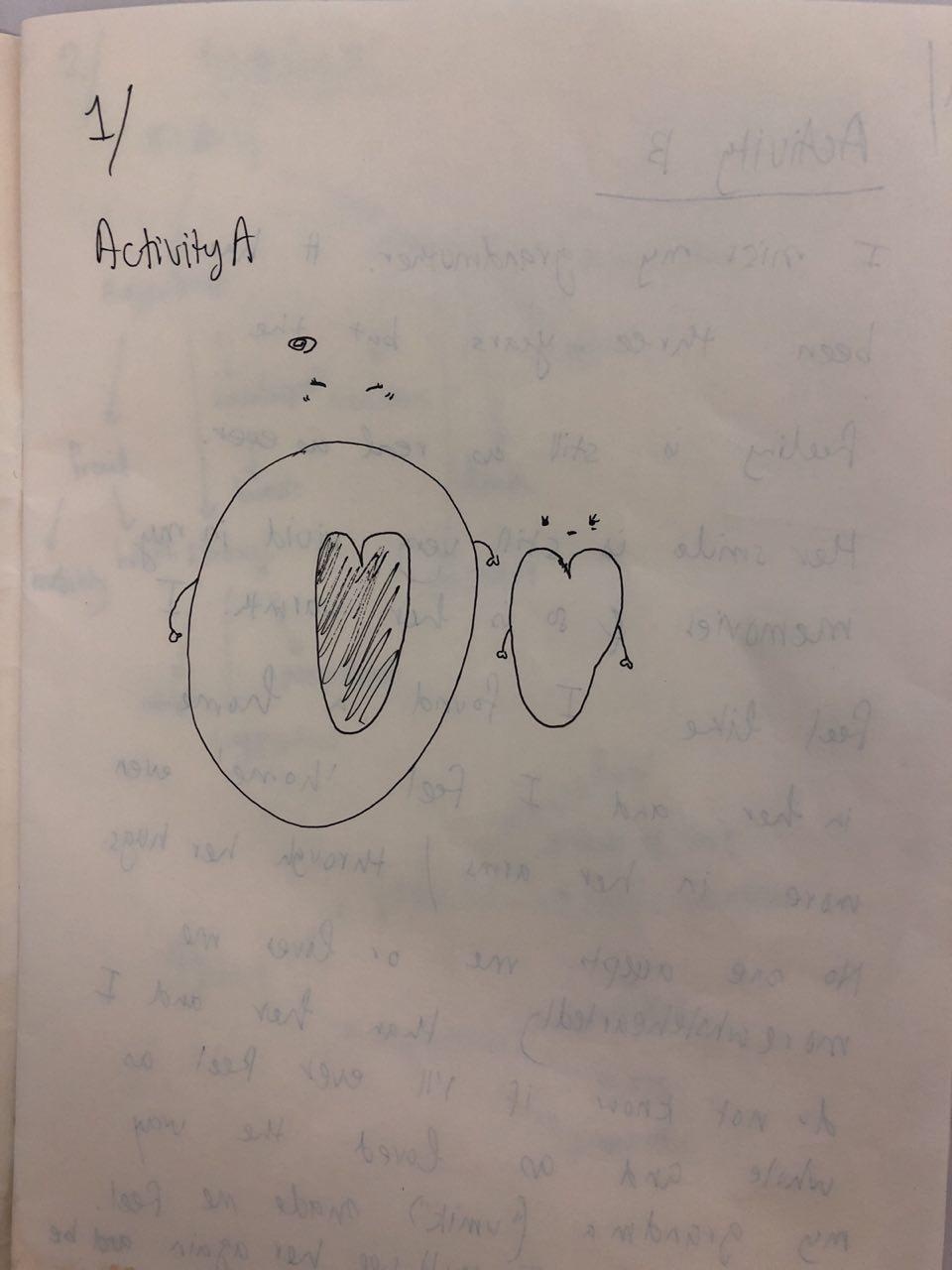
1A – Sara 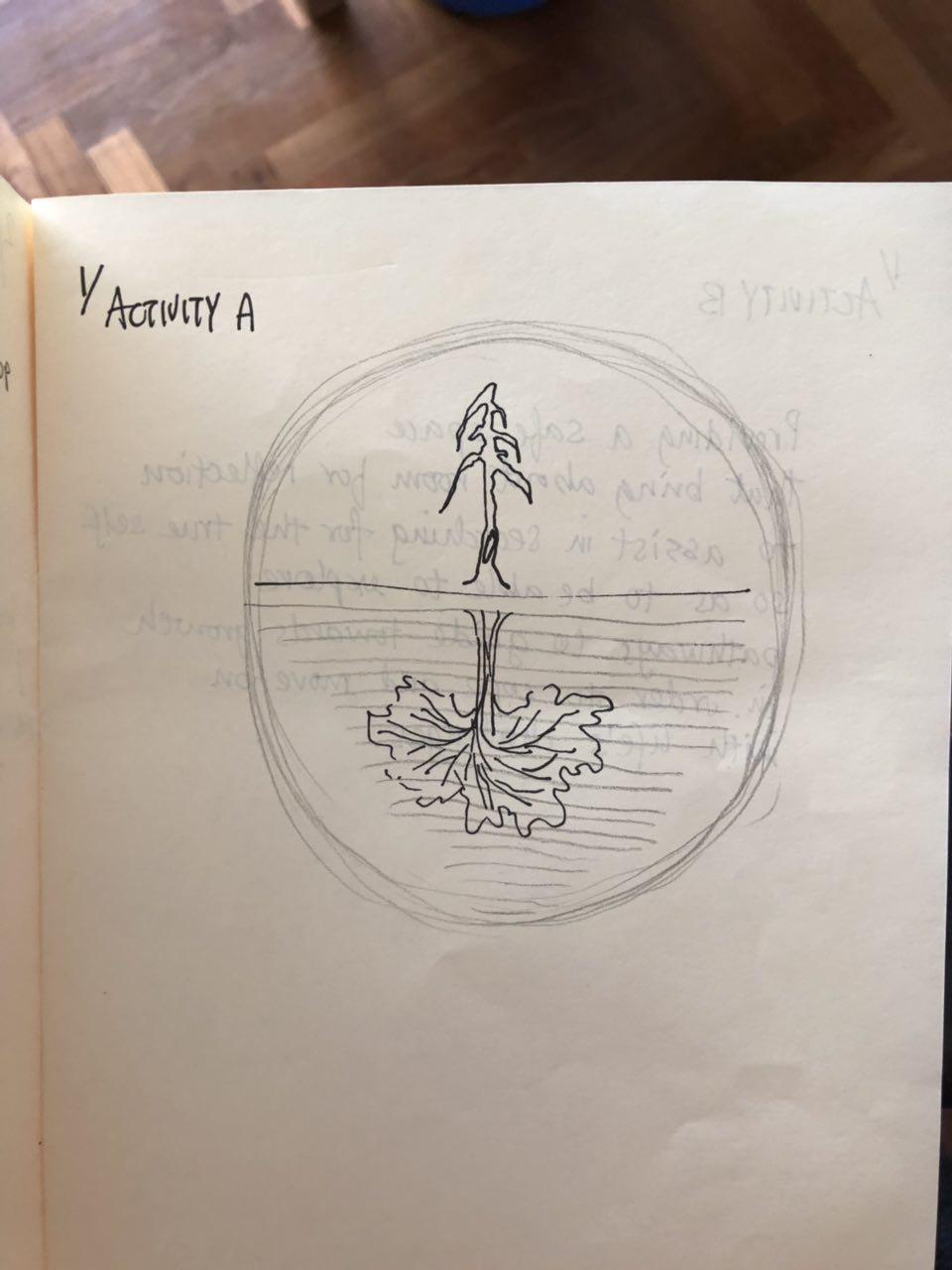
1A – Anna
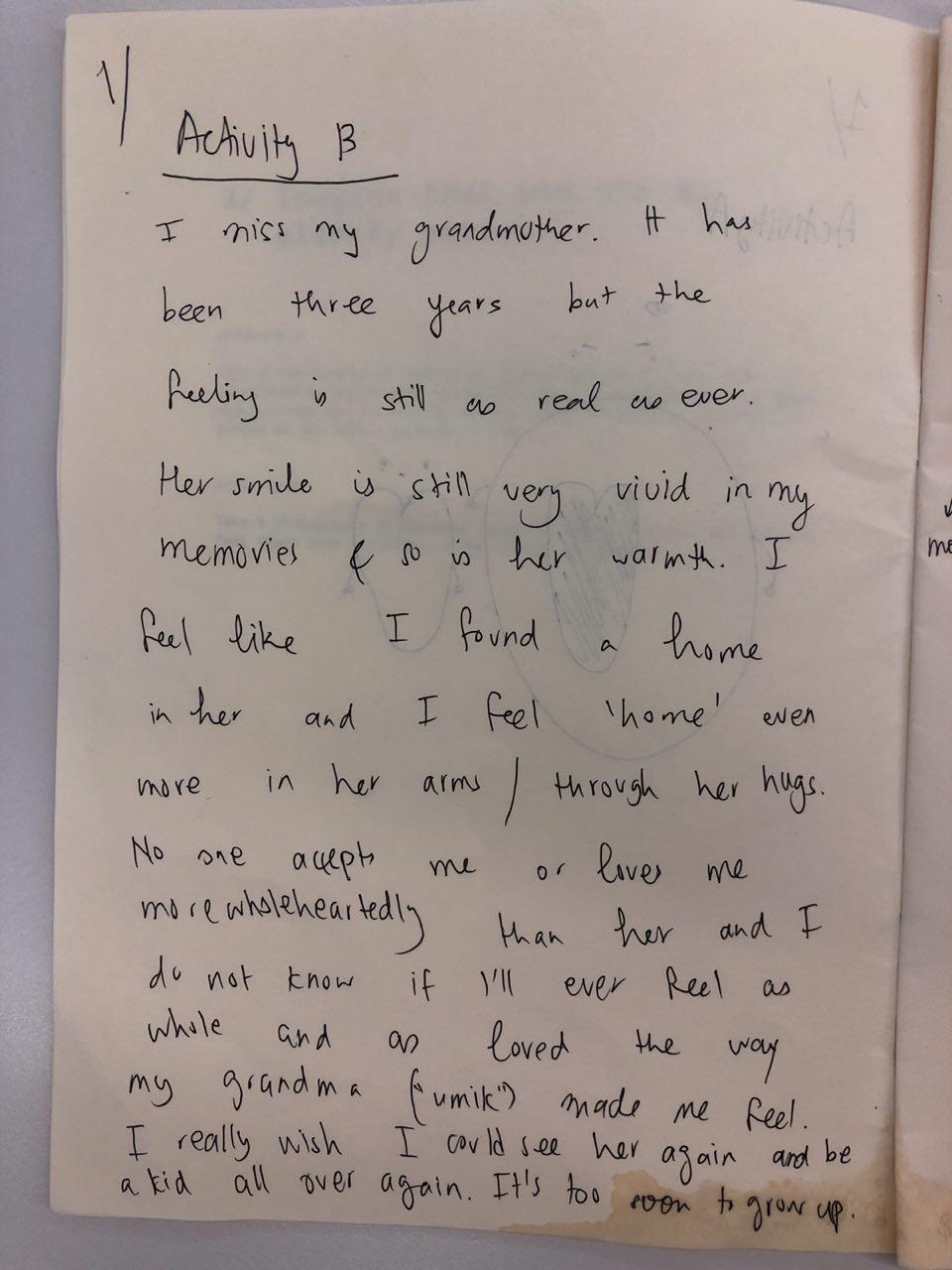
1B – Sara 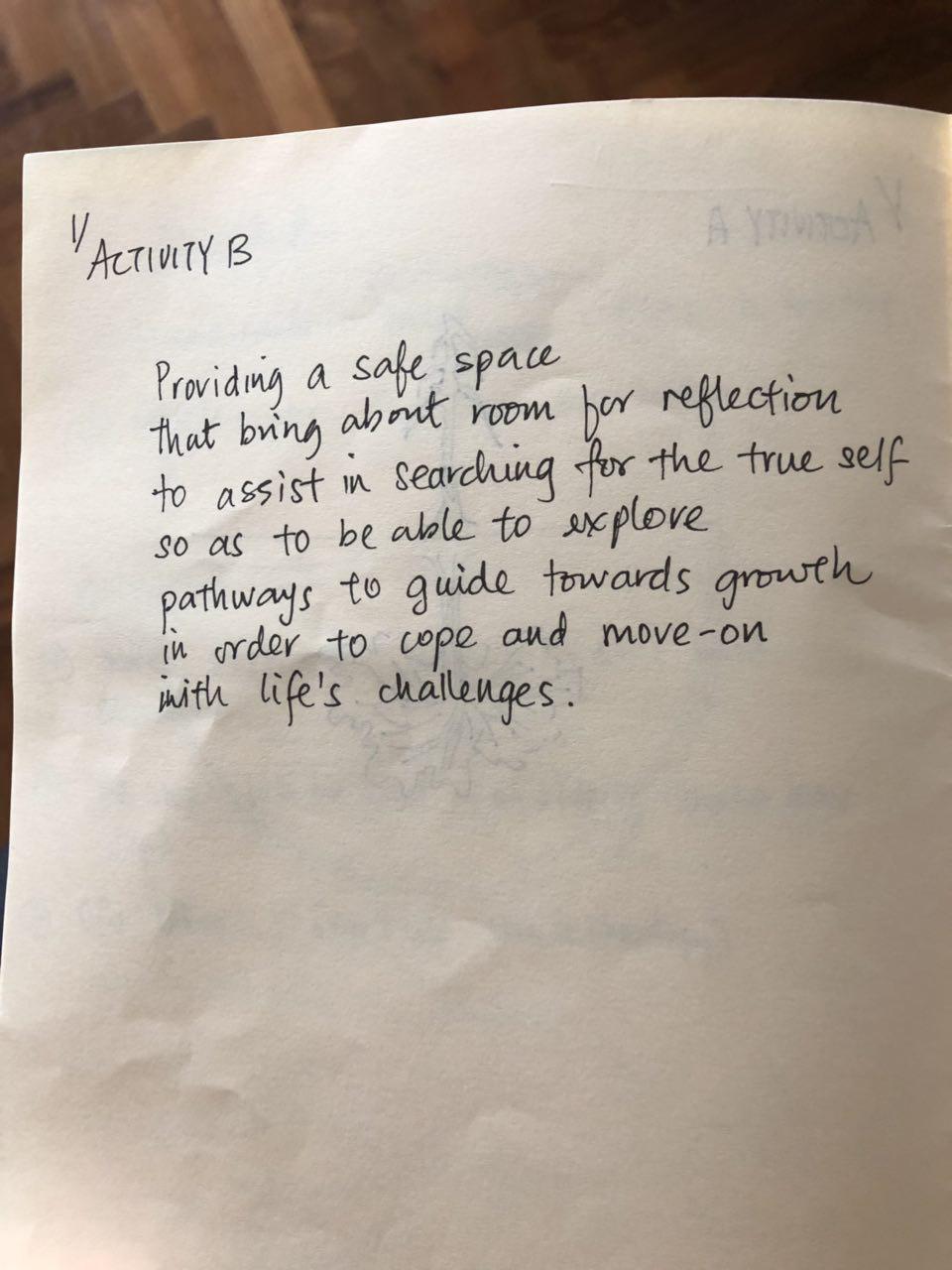
1B – Anna
Interestingly, for this prompt, Sara put herself in the shoes of what it was like to be a client receiving art therapy. She wrote out a story of her grandmother and her feelings towards the matter – in doing so, she is expressing that she thinks art therapy is meant to heal the heart through drawing and talking one’s problems through and to the therapist.
Anna drew a sapling that had a reflection of a tree, indicating the nourishment that art therapy provides as well as how how the art her clients make provide a reflection she writes about under 1B.
2. Mental model of ageing and the elderly
- You are given a list of 7 words below. Based on your own interpretation and understanding of their meanings, implications and/or relationship(s), create one or more word trees using the words as prompts. You should come up with at least 10 other words to create your word tree(s), excluding the given prompts. You may use any number of pages you wish.
- Elderly
- Death
- Ageing
- Health
- Mobility
- Values
- Stereotypes
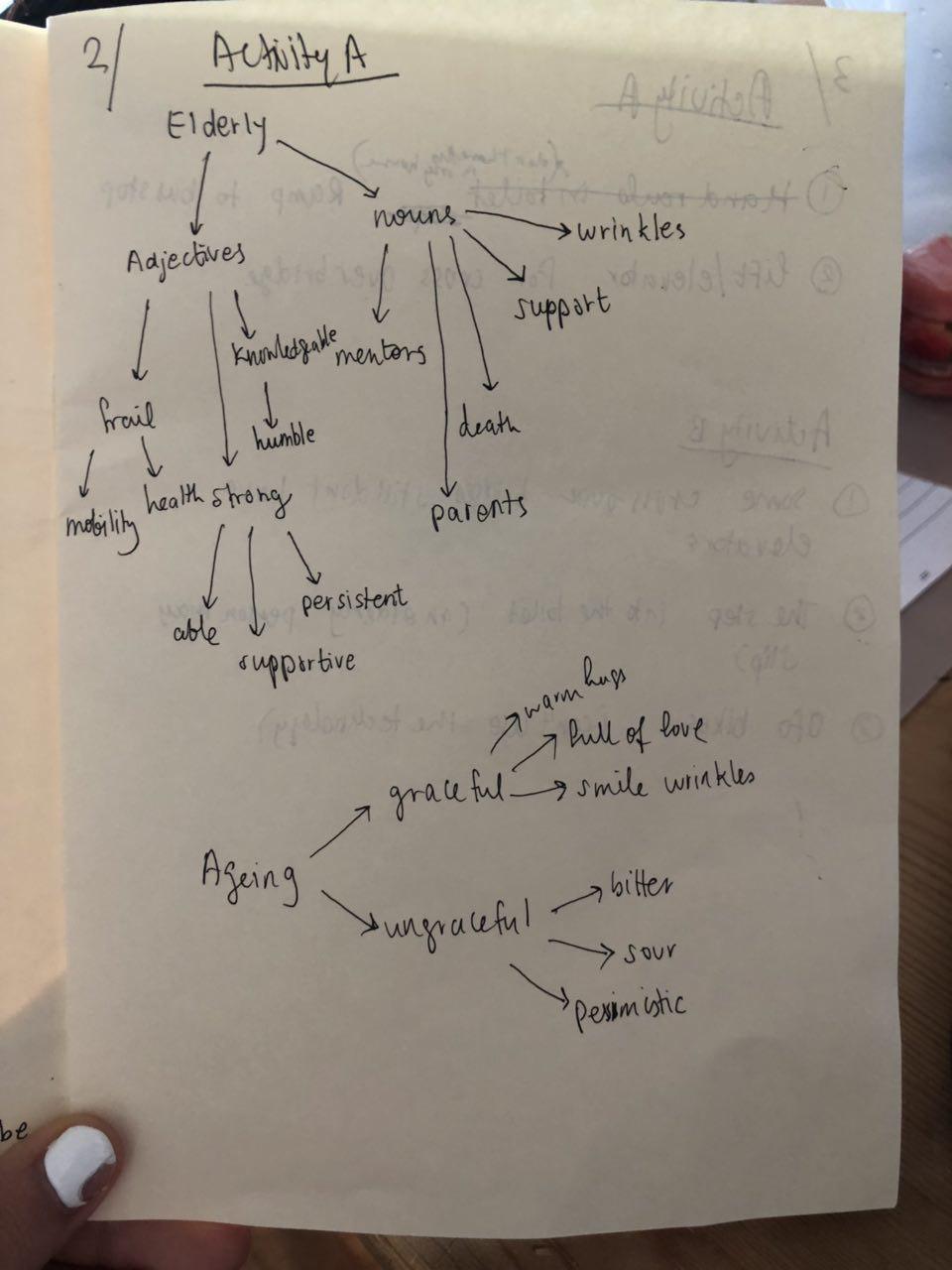
2A – Sara 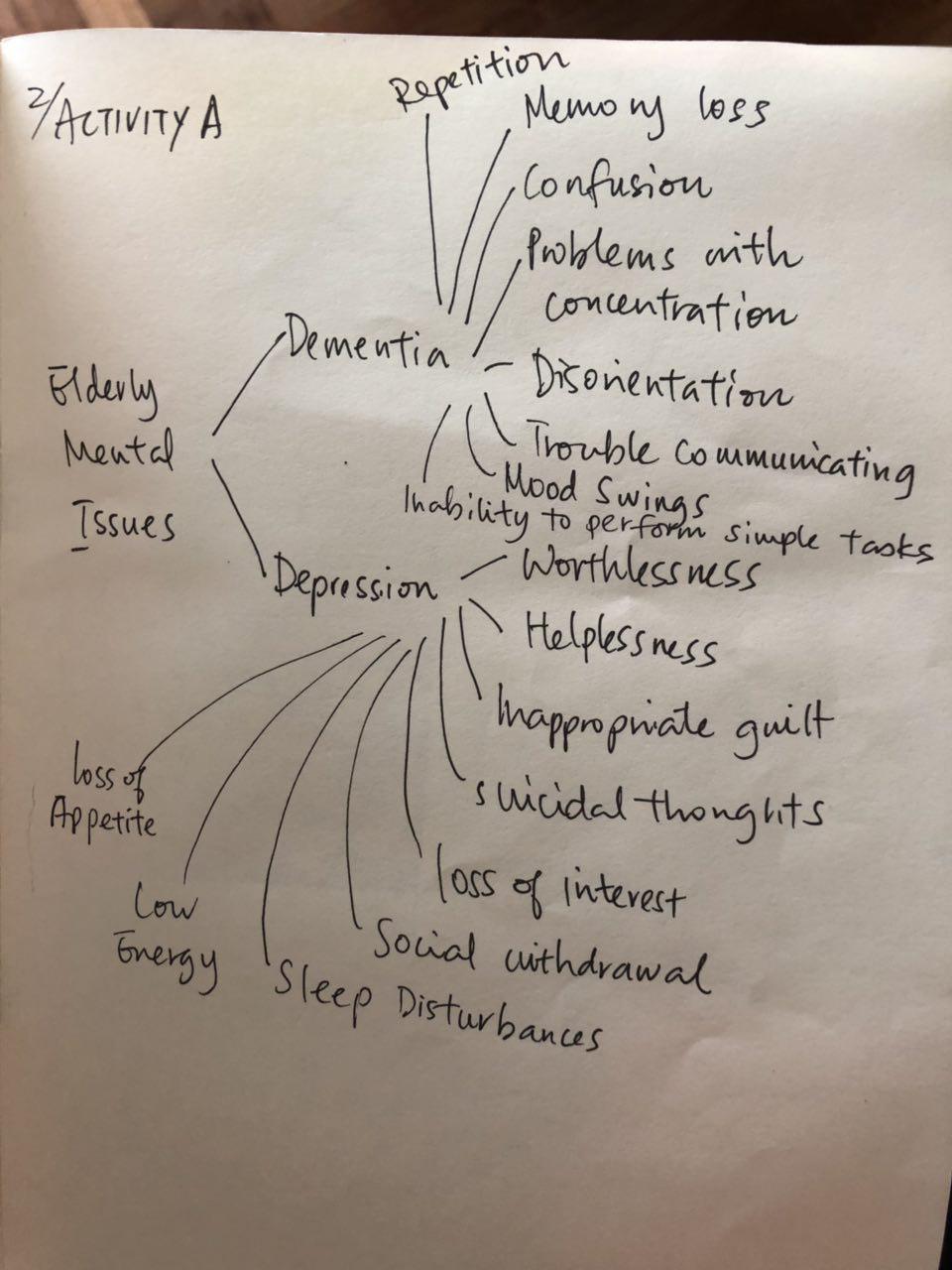
2A – Anna
Sara, as a nursing student, approached this question from a relatively objective/external/medical point of view. As compared to Anna who went more in depth with regards to the mental health of elderly.
3. Imagine that you are an elderly person.
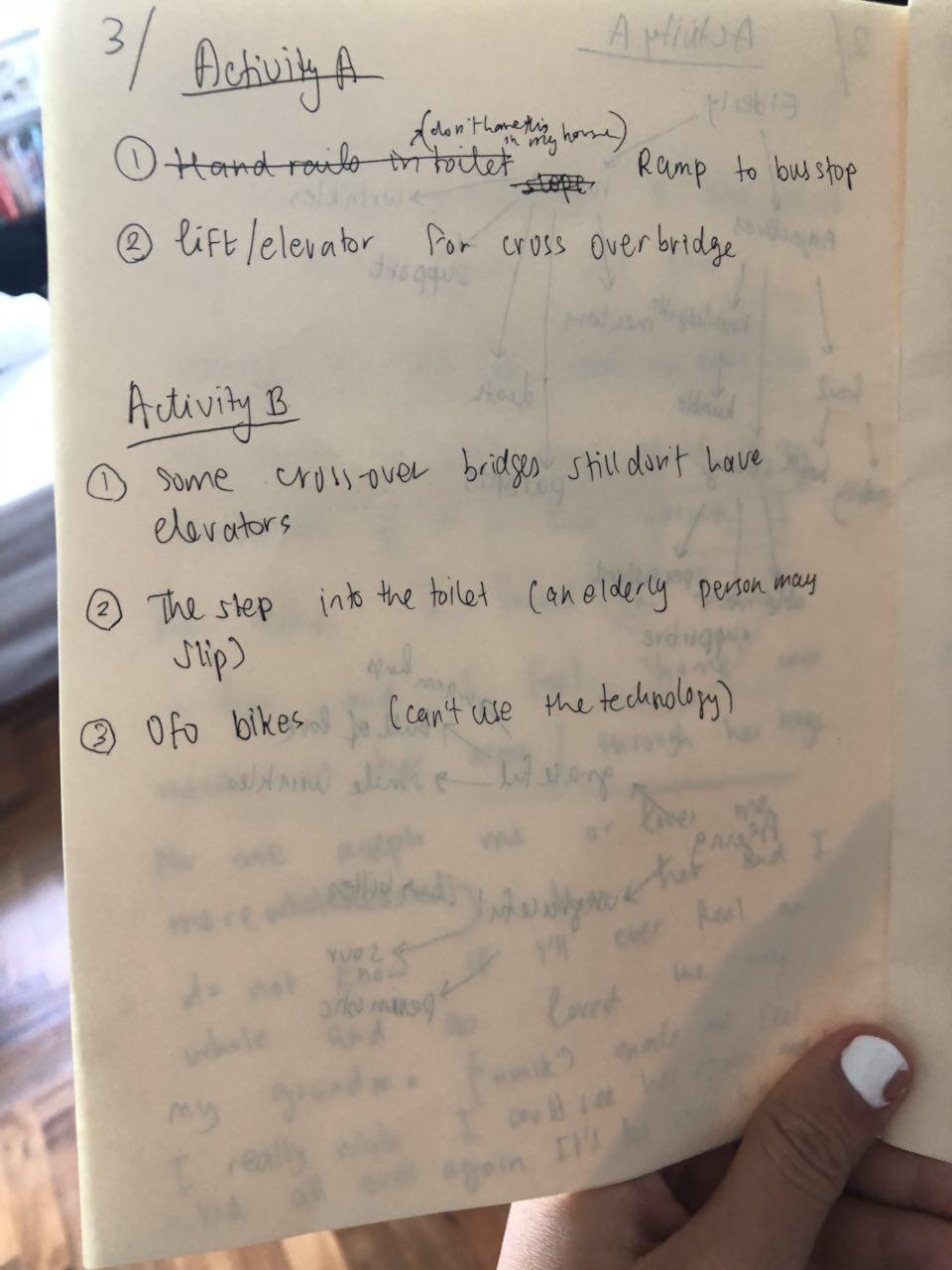
3A+B – Sara 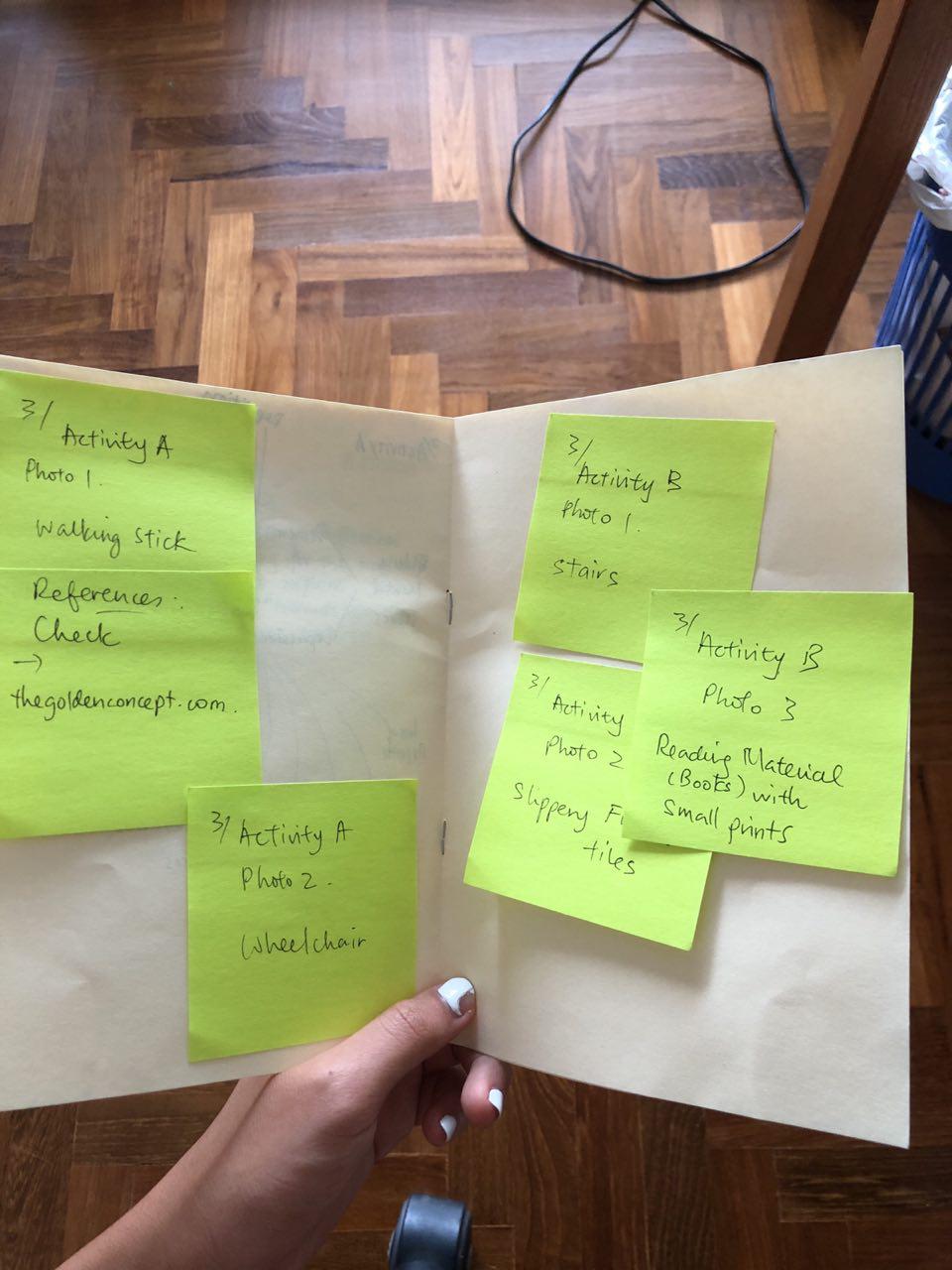
3A+B – Anna
The images were provided separately but these were a representation of what the two participants thought about for prompt 3.
